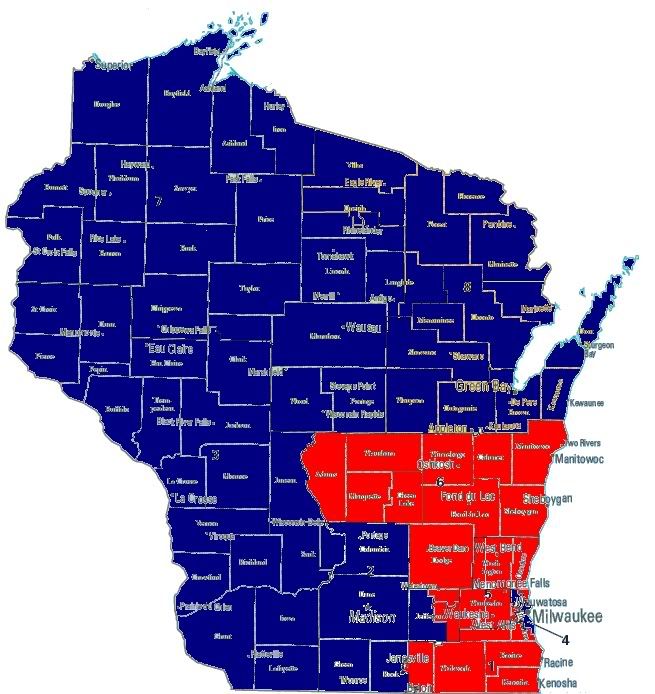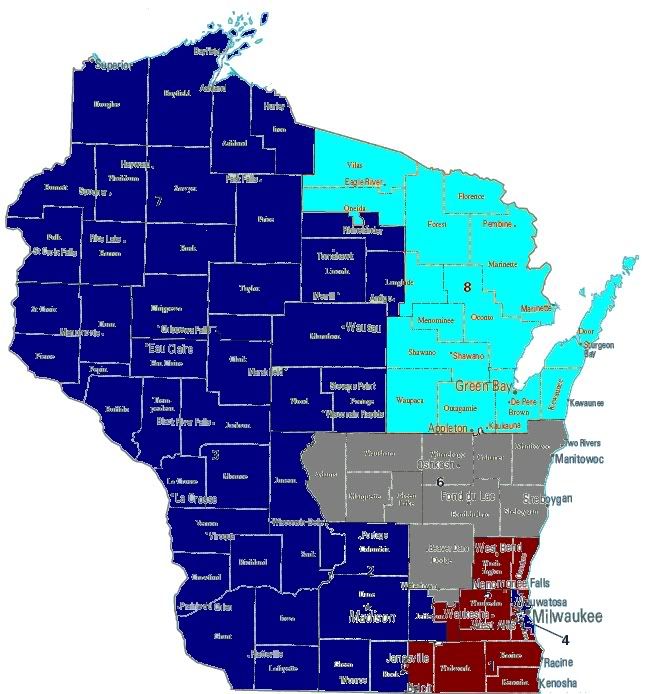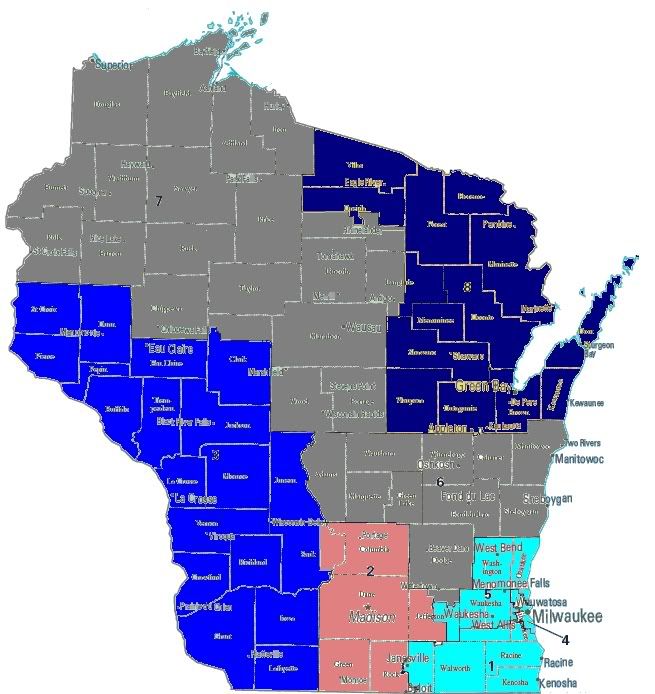| Legislative Body | Composition |
|---|---|
| OK-Senate TN-Senate PA-House IN-House MT-House ME-Senate NY-Senate OR-House MT-Senate NV-Senate WI-Assembly TX-House MI-House IA-House OH-House TN-House DE-House WI-Senate AZ-House AK-Senate IL-House |
24-24 16-16-1 102-101 51-49 50-49-1 18-17 32-30 31-29 26-24 11-10 52-47 79-71 58-52 53-47 53-46 53-46 22-19 18-15 33-27 11-9 67-51 |
We’re going to try something new here at Swing State Project: a list of competitive state legislature races for 2008. However, we aren’t breaking them down into the tossup/lean/likely framework that you’re familiar with. Unlike Senate and House races, where there is abundant polling and fundraising information to help us make informed decisions, state legislatures are jigsaws made up of hundreds of different races, most of which we know precious little about. Therefore, we’re simply listing the closest legislative bodies, starting with the ones that are tied and working downward based on percentage of seats held by the majority party.
There are a few legislative bodies that are close enough to be on this list, but aren’t included because they’re elected in off-years (Louisiana House, 53 D/49 R/1 I/2 V) or everyone gets elected all together in 2010 (Michigan Senate, 17 D/21 R).
This list makes a few of these legislative bodies look to be at more risk of flipping than they actually are. For instance, the Tennessee Senate isn’t likely to flip back to us this year, as we’re facing the potential loss of Democratic held open seats in GOP-leaning rural areas due to retirement. Conversely, Democrats in the Oregon House are likely to strengthen their position because of Republican retirements in suburban Dem-leaning seats. Indiana Democrats also seem optimistic about their ability to hold the razor-close Indiana House.
Likewise, there are chambers where reality might place them a little higher on the list. Most prognosticators, for instance, would agree that the New York Senate flipping to Democratic control is all but a done deal at this point, what with Majority Leader Joe Bruno already having hit the eject button and several GOP old-timers in strongly Democratic seats running on fumes. Similarly, there’s a lot of optimism about retaking the Wisconsin Assembly.
Also, there is a handful of states where the number of seats needed to flip, and the small number of constituents per seat, make it possible that anything can happen. (Consider the New Hampshire House of Representatives in 2006. The GOP controlled 62% of the seats, making it look safe. The Democrats flipped 90 seats (out of 400… NH has by far the largest state legislature) to take firm control. No one saw that coming, proof that anything can happen at this level.)
Alaska may be a prime example, where Dems only need to flip two seats to take control of the Senate… and with indictments cutting a swath through the Republican caucus in the Senate, the popular Governor now facing a mini-scandal of her own, and potentially big Obama coattails, it may be the year to make it happen. The Senates in both North and South Dakota also need only a few flipped seats to change hands, and, again, with Obama coattails, it’s possible; the same applies to the perpetually-close Montana House.
As stated during last month’s state legislature overview, though, useful links about state legislatures are few and far between in the blogosphere, so we need our readers to help be our eyes and ears. If you have any further insights into any of these races or helpful links, please share in the comments.



